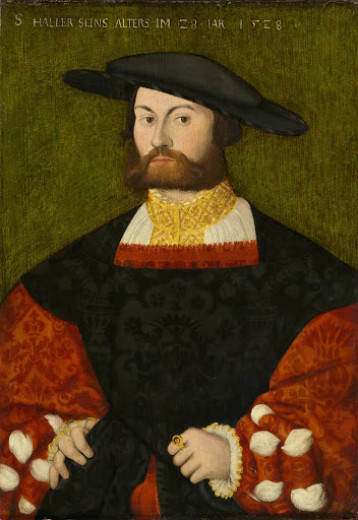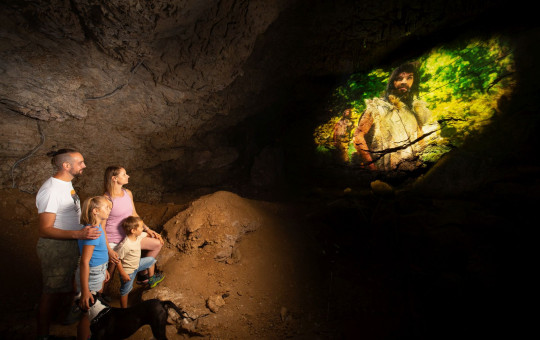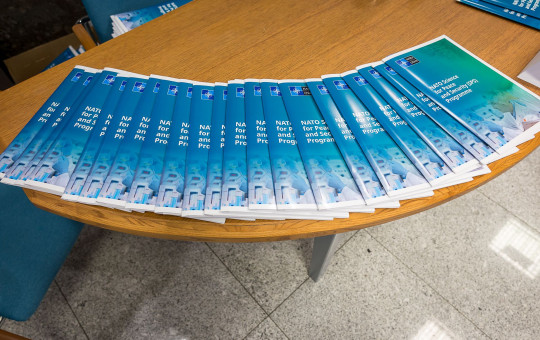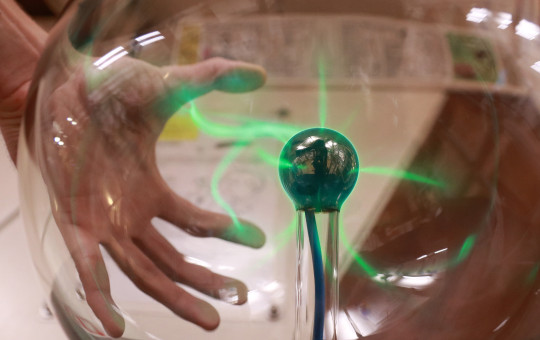Date: 28. February 2024
Time to read: 2 min
Baron Ferdinand Augustin Hallerstein was a Slovenian scientist who spent most of his life as a missionary in China and contributed to the science of astronomy with his innovative solutions.
He was educated by the Jesuits in Ljubljana. After graduating from high school, he entered the Jesuit Order. He continued his studies in Graz and Vienna, where he gained excellent knowledge of mathematics and astronomy, among other subjects. After completing his higher education studies, he had the opportunity to fulfil his dream of becoming a missionary, which he had been planning from a young age. He moved to China.
Scientific legacy
Hallerstein observed stars, comets, planets and satellites, solar and lunar eclipses, organised astronomical measurements in various places of the vast empire, made maps of parts of the Chinese Empire, participated in the creation of an extensive star chart of some 3,000 stars, etc.
He also left a legacy of numerous natural history and ethnological writings on China at that time, on earthquakes, religions, costumes, animals, the specific landscape (he described some types of karstic land features) and the socio-political situation. His research and work in astronomy is particularly rich.
From 1740 to 1770 he carried out astronomical measurements at the Jesuit observatory (the star observation facility) in Beijing, became a member of the astronomical and mathematical bureau in 1743, became president of the bureau and head of the star observation facility in 1746, travelled and mapped Tataria in 1749, published, in 1768 in Vienna, a voluminous work on the observations of the Jesuits in Beijing, Astronomical Observations, had a decisive role in the publications of the catalogue of 3,083 stars in 1757 and of the large-scale atlas of China in 1769.
His astronomical research also had a decisive influence on foreign research and foreign scientists. He was in close contact with scientists at the Russian Academy of Sciences in St Petersburg, the Philosophical Transactions of the Royal Society in London, and his discoveries were also published in the publications of the Imperial Astronomical Observatory in Vienna.
He was a man who cultivated relations with other European scientific institutions and individual scientists. As head of the observatory, that is to say, as an organiser and evaluator of the work, and also as an excellent observer with a systematic and exploratory approach to measurements, Hallerstein worked in this manner both theoretically and practically.
His practical experience is evident, for example, in the construction and improvement of certain instruments and observational methods. In fact, it is only recently that Slovenians are discovering the diversity and vastness of the output of this extremely hard-working man from the Gorenjska region in his lifetime. Hallerstein is not only the most important Carniolan astronomer, but also one of the most important Slovenian intellectuals of the past.
-
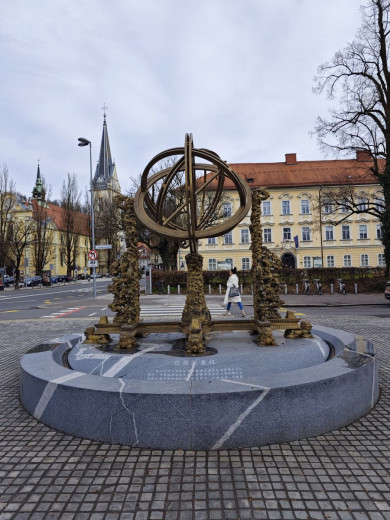 The pedestal bears an inscription in Mandarin and Slovenian. "The armillary sphere was designed by Augustin Ferdinand Hallerstein (Mengeš 1703–Beijing 1774), a Slovenian Jesuit, astronomer, mathematician, cartographer and diplomat, during his lifetime in China during the Qing dynasty. The original now stands at the Beijing Astronomical Observatory. The replica of the sphere was donated by the Embassy of the People's Republic of China." Photo: Embassy of the People's Republic of China
The pedestal bears an inscription in Mandarin and Slovenian. "The armillary sphere was designed by Augustin Ferdinand Hallerstein (Mengeš 1703–Beijing 1774), a Slovenian Jesuit, astronomer, mathematician, cartographer and diplomat, during his lifetime in China during the Qing dynasty. The original now stands at the Beijing Astronomical Observatory. The replica of the sphere was donated by the Embassy of the People's Republic of China." Photo: Embassy of the People's Republic of China
-
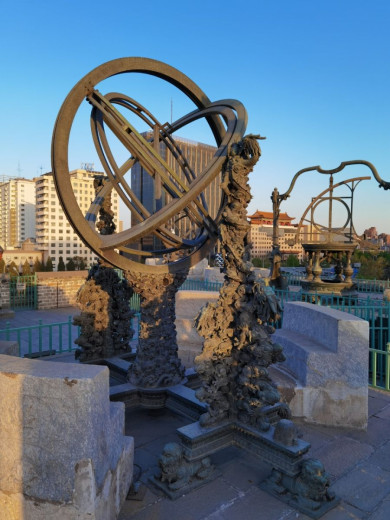 The armillary sphere in Beijing, China. Photo: Embassy of the People's Republic of China in Slovenia
The armillary sphere in Beijing, China. Photo: Embassy of the People's Republic of China in Slovenia
Hallerstein's armillary sphere in Ljubljana
As a sign of recognition given to Slovenia and in the light of further successful cooperation in science, the Republic of China has funded a special monument as a gift, a replica of the star observation instrument. The armillary sphere still stands today on the Beijing Ancient Observatory grounds.
The armillary sphere is a remarkable achievement by Hallerstein, who combined a heliocentric design, as used in Europe, with an equatorial layout, as was customary in China, to achieve a completely innovative and modern solution used in telescopes.
-
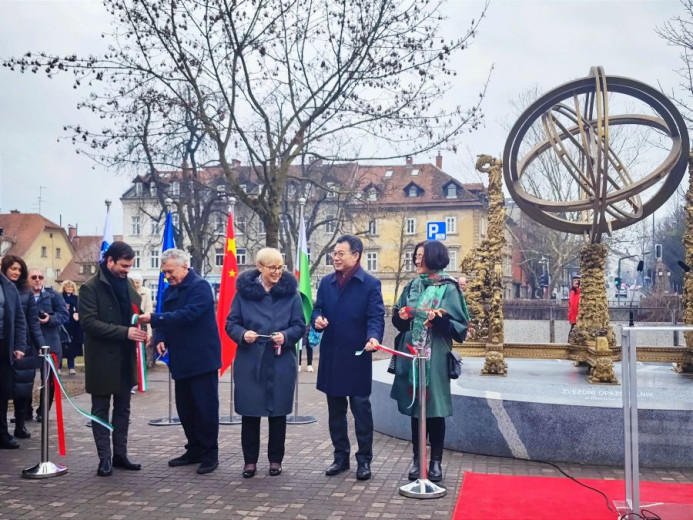 The unveiling ceremony in Ljubljana. Photo: Embassy of the People's Republic of China in Slovenia
The unveiling ceremony in Ljubljana. Photo: Embassy of the People's Republic of China in Slovenia
-
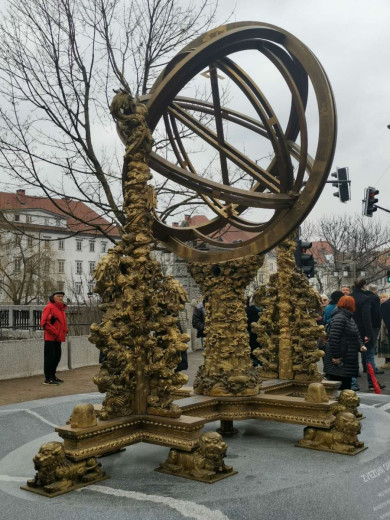 The geometries of the circle and the ellipse form a gap that provides distance to the sculpture and serves as a drain for meteoric water and as a mechanism for illuminating the monument. The 45 cm-high stone base also provides a place to sit and socialise by the monument. Photo: Embassy of the People's Republic of China in Slovenia
The geometries of the circle and the ellipse form a gap that provides distance to the sculpture and serves as a drain for meteoric water and as a mechanism for illuminating the monument. The 45 cm-high stone base also provides a place to sit and socialise by the monument. Photo: Embassy of the People's Republic of China in Slovenia

